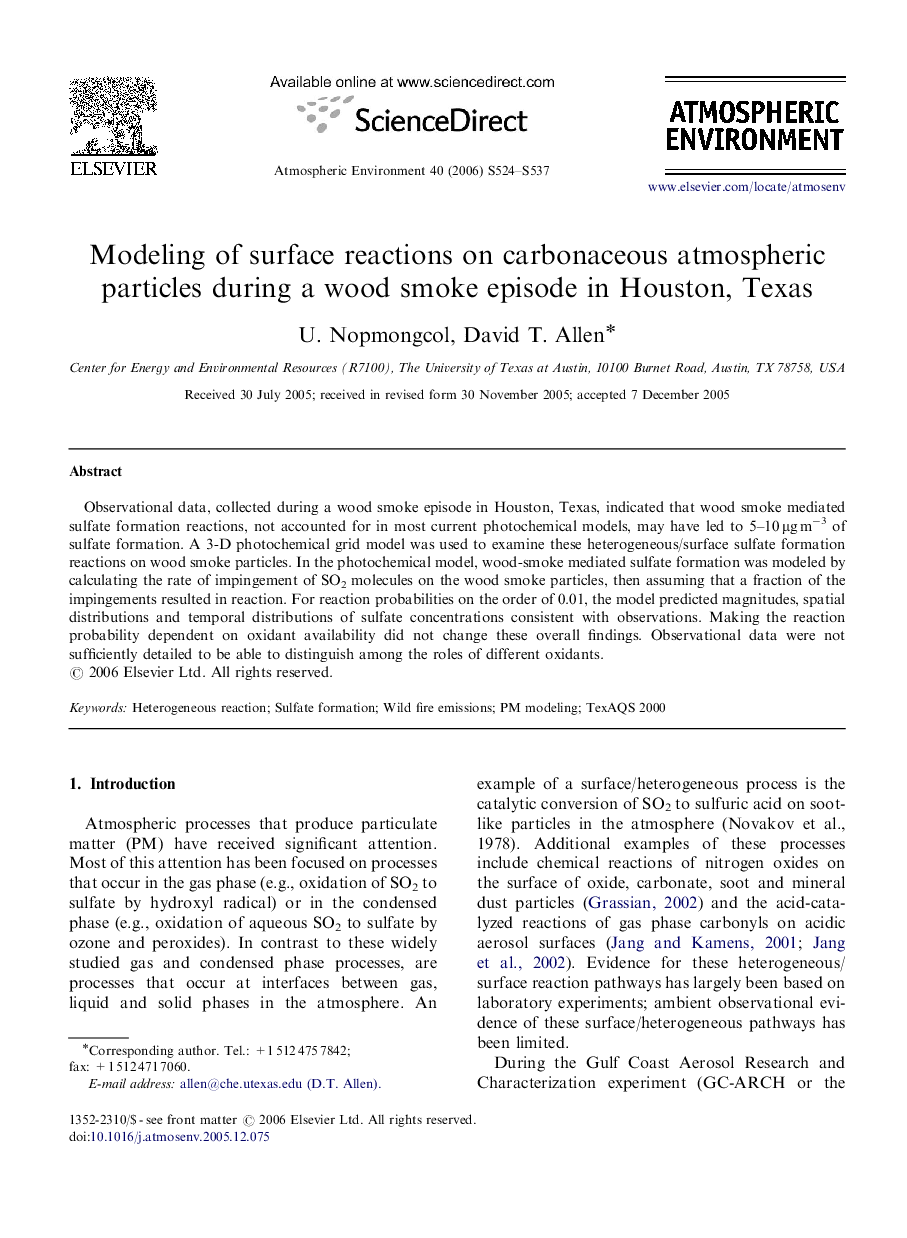| Article ID | Journal | Published Year | Pages | File Type |
|---|---|---|---|---|
| 4445121 | Atmospheric Environment | 2006 | 14 Pages |
Observational data, collected during a wood smoke episode in Houston, Texas, indicated that wood smoke mediated sulfate formation reactions, not accounted for in most current photochemical models, may have led to 5–10 μg m−3 of sulfate formation. A 3-D photochemical grid model was used to examine these heterogeneous/surface sulfate formation reactions on wood smoke particles. In the photochemical model, wood-smoke mediated sulfate formation was modeled by calculating the rate of impingement of SO2 molecules on the wood smoke particles, then assuming that a fraction of the impingements resulted in reaction. For reaction probabilities on the order of 0.01, the model predicted magnitudes, spatial distributions and temporal distributions of sulfate concentrations consistent with observations. Making the reaction probability dependent on oxidant availability did not change these overall findings. Observational data were not sufficiently detailed to be able to distinguish among the roles of different oxidants.
